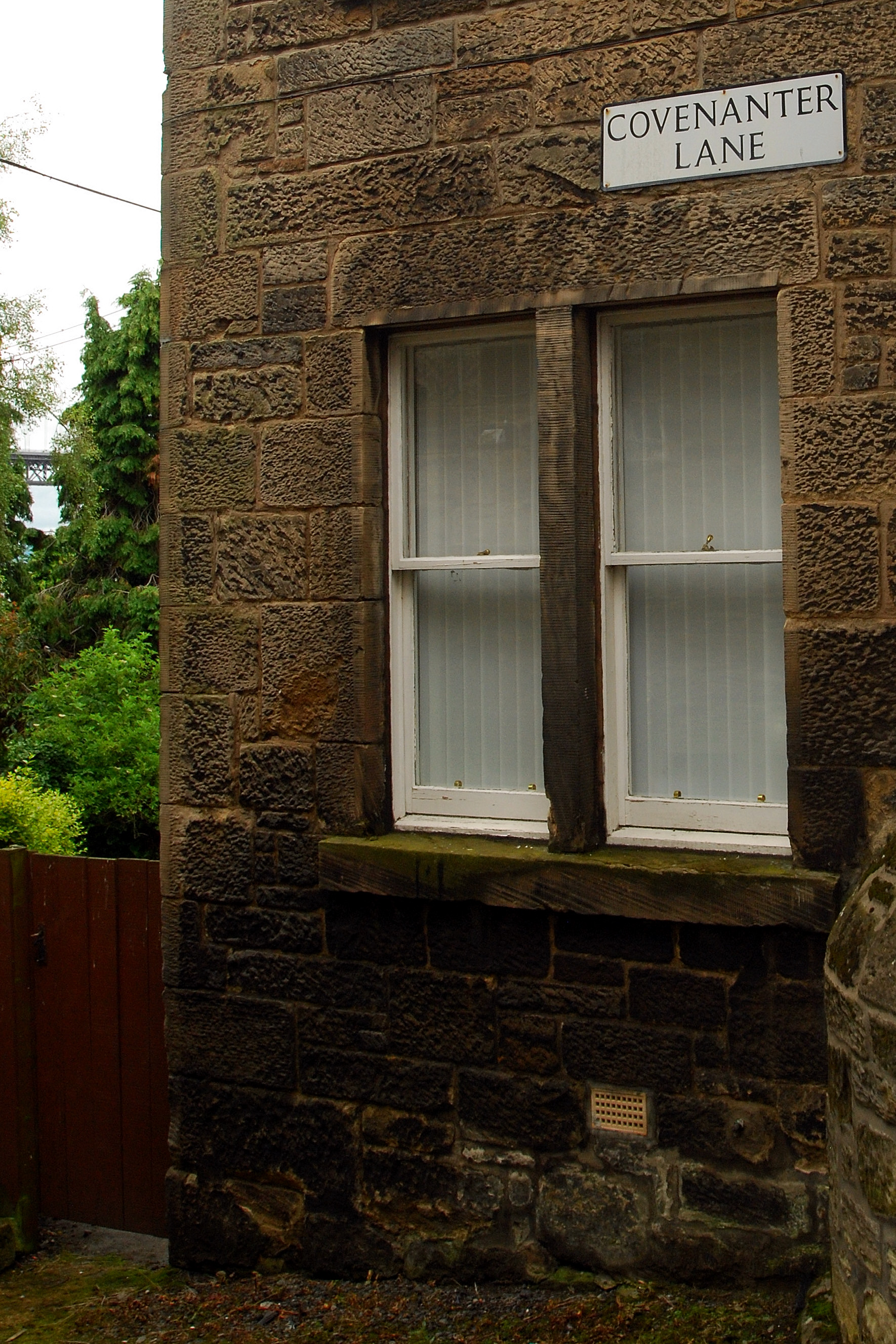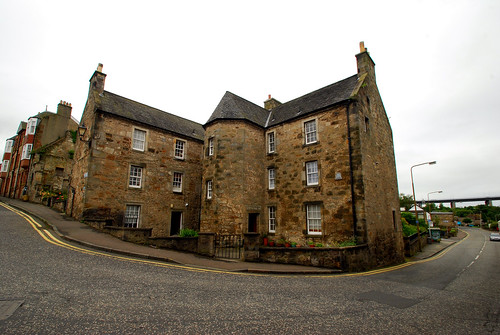 |
| Photo: Flickr James B. Brown |
John Howie devoted a chapter to Hall in the Scots Worthies. He describes how when the persecuting governor discerned "the house where they alighted, he sent his servant off in haste for his men, putting up his horse in another house, and coming to the house to them as a stranger, pretended a great deal of kindness and civility to Mr. Cargil and him, desiring that they might have a glass of wine together. -- When each had taken a glass, and were in some friendly conference, the governor, wearying that his men came not up, threw off the mask, and laid hands on them, saying, they were his prisoners, and commanded the people of the house, in the king's name to assist. But they all refused, except one Thomas George a waiter; by whose assistance he got the gate shut. In the mean while Haugh-head, being a bold and brisk man, struggled hard with the governor, until Cargil got off; and after the scuffle, as he was going off himself, having got clear of the governor, Thomas George struck him on the head, with a carbine, and wounded him mortally. However he got out; and, by this time the women of the town, who were assembled at the gate to the rescue of the prisoners, convoyed him out of town. He walked some time on foot, but unable to speak much, save only some little reflection upon a woman who interposed, hindering him to kill the governor, that so he might have made his escape more timeously. At last he fainted, and was carried to a country house near Echlin; and although chirurgeons were speedily brought, yet he never recovered the use of his speech any more. Dalziel, living near-by, was soon advertised, and came quickly with a party of the guards, and seized him; and although every one saw the gentleman just a-dying, yet such was his inhumanity, that he must carry him to Edinburgh.
 |
| Photo: Flickr James B. Brown |

A drawing of the house where the incident took place is available. The house was demolished in the 1930s but a photograph of it exists. It was called The Palace or Covenanters' House.

 The Queensferry Paper is extensive and considered to be quite detailed and advanced. It is also said to contain republican political views. It was also called "The Fanaticks New Covenant". It was also called "Cargill's Covenant". There were no signatories and it seems likely that much though not all of it was the work of Donald Cargill. Cargill could not readily consent to all of its content, however. It was indeed expressed as a Covenant and was resolute in its language:
The Queensferry Paper is extensive and considered to be quite detailed and advanced. It is also said to contain republican political views. It was also called "The Fanaticks New Covenant". It was also called "Cargill's Covenant". There were no signatories and it seems likely that much though not all of it was the work of Donald Cargill. Cargill could not readily consent to all of its content, however. It was indeed expressed as a Covenant and was resolute in its language:we cannot but with much trembling of heart renew our covenant, or engage anew, especially considering our own weakness and hazard; yet the clear conviction of duty, zeal to God’s glory, and love of Christ’s reigning, which is the highest duty that a man can perform to God, trusting in his mercy, who knows the integrity and rightness of our intentions, will both instruct, enable, accept, preserve and prosper us: we go on declaring those, and nothing but those to be our present purpose
1. To covenant with and swear acknowledgement of the Trinity and to own the Old and New Testaments to be the rule of faith.
2. To advance God`s kingdom, free the church from Prelacy and Erastianism, and remove those who had forfeited authority.
3. To uphold the Presbyterian Church of Scotland, with her standards, polity, and worship, as an independent government.
4. To overthrow the kingdom of darkness, ie Popery, Prelacy and Erastianism.
5. To discard the royal family and set up a republic.
6. To decline hearing the indulged clergy.
7. To refuse the ministerial function unless duly called and ordained.
8. To defend their worship and liberties, to view assailants as declarers of war, to destroy those assaulting, and not to injure any but those that have injured us


